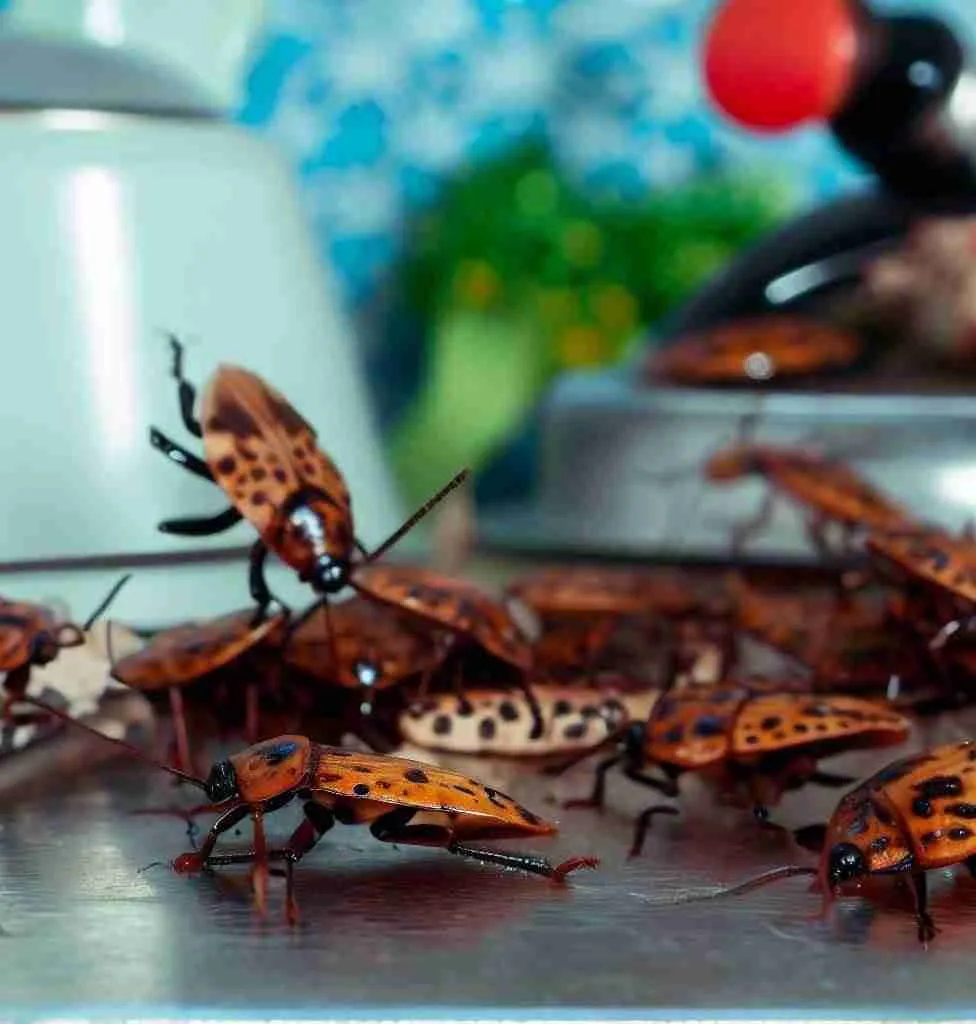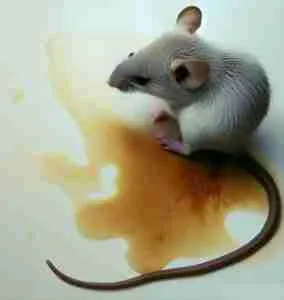Contents
ToggleIdentification: What is that tiny, skinny bug?

Does the phrase “tiny black bugs in the bathroom with no wings” sound all too familiar? Are you finding yourself spotting these little visitors frequently around your home? These miniature house guests often share a few common characteristics: they’re slender and elongated, sporting a dark black or brown color, and when startled, they’re known to scuttle away at surprising speeds. But what exactly are these mysterious creatures?
The answer isn’t as simple as one might hope. These tiny, wingless wonders could be one of several types of common household bugs. Let’s shine a light on the usual suspects: earwigs, silverfish, firebrats, click beetles, or weevils. Each of these pests has unique traits that set them apart, and correctly identifying them is the first crucial step in showing them the exit door from your home.
Earwigs are easily identifiable by the pair of pincer-like appendages on their back end, giving them a somewhat menacing look. Silverfish and firebrats, close relatives, resemble poppy seeds and sport a carrot-shaped body that tapers towards the rear end. They lack wings and instead rely on their numerous legs to get around.
The acrobatic click beetles are named after the distinctive clicking sound they make when they flip themselves into the air to escape predators. The sound is produced by a special hinge on their body. Lastly, the weevils, notorious pantry pests, are often found near food or grain. They’re easy to recognize by their elongated snouts and hard, sometimes spotted bodies.
By knowing what to look for, you can identify these uninvited guests and take the necessary steps to ensure they don’t overstay their welcome.
Types of Bugs: Who’s Who in the Insect World

You’ve spotted a little black bug with a rather threatening set of pincers or forceps on its back end? Don’t worry, you’re not under attack, you’ve simply stumbled upon an earwig. Despite the slightly terrifying look and their rather ominous name, which stems from an old wives’ tale suggesting they burrow into people’s ears, earwigs are largely harmless to humans. They’re lovers of moist environments, often found in damp, outdoor areas where they feed on decaying plant material. They can sometimes sneak indoors, particularly when the weather turns colder.
Next in our lineup are the silverfish and firebrats, two types of tiny bugs that bear a remarkable resemblance to poppy seeds. These insects are often mistaken for each other due to their similar shape and size. Both are wingless, brandishing a body that tapers like a carrot, and they prefer to set up camp in warm, humid places. If you’ve seen them in your bathroom or basement, especially if it’s a walkout basement, you’ve likely identified them correctly. However, you can distinguish between the two by their color. Silverfish are shiny, silvery-grey, while firebrats have a more mottled brown appearance.
The click beetle, another long, skinny bug, has an entirely different party trick. If you’ve been startled by a bug that seemingly jumps or flips into the air when disturbed, you’ve encountered a click beetle. These beetles have a unique mechanism on their underside that snaps, propelling them into the air to escape predators. They’re typically black or dark brown and are attracted to areas with decaying vegetation.
Finally, if you’ve spotted a bug near food or grain, you might be dealing with a weevil. Weevils are tiny black bugs, sometimes with white spots, and a distinctive snout that’s hard to miss. They’re known as pantry pests, and an infestation can mean trouble for your food storage, especially grains, and cereals.
Behavior: What Do These Bugs Do?

Despite their minute size, these tiny invaders are far from insignificant, each having a unique lifestyle and habits that can impact your home environment differently.
Earwigs are creatures of the night, preferring to stay hidden during daylight hours in small, moist crevices. These little scavengers have a surprisingly varied diet, chowing down on decaying matter and occasionally venturing into plant material. They’re often found outside in gardens but can make their way indoors in search of food or shelter, especially during colder months.
Next up are the silverfish and firebrats, also members of the nocturnal club. They’ve evolved to thrive on a diet rich in carbohydrates and protein. This might sound quite ordinary until you realize that their menu includes book bindings, wallpaper glue, and your favorite cotton t-shirt! This dietary preference makes them a nuisance around the house, as they can cause noticeable damage over time. They are particularly fond of warm, humid environments, which makes your bathroom their ideal hangout spot. If you have a walkout basement, they might find this area of your home appealing as well.
The click beetles are a less destructive, but nonetheless interesting, group. While they won’t munch on your household items, their unique clicking behavior can make them a noticeable presence. When threatened or turned upside down, they use a specialized hinge mechanism to launch themselves into the air with an audible click, startling anyone nearby. They generally prefer to stay outdoors, drawn to areas with decaying vegetation.
Last but not least, weevils can be a real headache for the culinary enthusiasts among us. These tiny black bugs have a knack for invading your pantry, laying their eggs in grain and other foodstuffs. They are tiny black bugs with white spots that are often unnoticed until an infestation has occurred, leading to significant food contamination.
Harmfulness: How Dangerous Are These Tiny Invaders?

The thought of tiny, long, black bugs scurrying around your home can definitely send shivers down your spine. However, it’s important to know that most of these bugs are more likely to cause a scare than any real harm to humans or pets.
Take earwigs, for instance. Despite their somewhat intimidating appearance, complete with menacing pincers at their rear, they are not venomous and rarely resort to biting humans. They’re much more interested in feeding on decaying plant matter than causing you any distress.
Similarly, silverfish and firebrats are more of an annoyance than a real threat. While they can damage household items with their feasting habits, they don’t pose a direct health risk to humans or pets. Click beetles, too, are relatively harmless, causing more of a surprise with their unusual clicking defense mechanism than any actual harm.
Weevils, while not dangerous in the traditional sense, can still cause a significant headache for homeowners. Their penchant for laying eggs in grains and other foodstuffs can lead to food contamination. While they’re not known to transmit diseases, finding weevils in your pantry is certainly not a pleasant experience, and they should be removed promptly to prevent further food spoilage.
While none of these bugs are known carriers of diseases, it’s worth noting that large infestations can trigger allergies in some individuals. The presence of bugs can lead to increased levels of allergens in the home, which can cause allergic reactions in sensitive individuals.
So, while these tiny black bugs might seem like a horror movie comes to life, they’re mostly harmless. However, it’s always a good idea to manage and prevent infestations to maintain a clean, comfortable living environment.
Prevention: Keep the Bugs at Bay
One of the best ways to prevent these bugs from making themselves at home is by keeping your house clean and reducing potential hiding places. For instance, regularly shampooing your carpets, as suggested in this guide on how often you should shampoo your carpets, will help eliminate any eggs or larvae that may be lurking there.
Furthermore, reducing moisture in your home, especially in areas like the basement or bathroom, is vital. If you have a basement, ensure it is properly sealed and ventilated. Regularly clean and dry out areas prone to dampness, like your bathroom, to keep away mold, as suggested in this article on how to get rid of mold in the bathroom.
Sealing cracks and crevices around your home can also help prevent bugs from getting in. Remember to store food, particularly grains, and cereals, in airtight containers to prevent weevils.
Lastly, maintaining a regular cleaning schedule is vital. A central vacuum system can be a great investment for keeping your home spick and span. For smaller spaces or apartments, consider one of these top 8 apartment vacuum cleaners.
Treatment: Time to Show These Bugs the Door
If you’ve found yourself playing unwilling host to these long, skinny black bugs, don’t despair. Dealing with an infestation might seem daunting, but there’s a range of treatments available to help you reclaim your space. From natural remedies to more potent chemical treatments, there’s something to suit every situation and preference.
Let’s start with natural remedies. One effective option is diatomaceous earth, a fine powder made from the fossilized remains of tiny aquatic organisms known as diatoms. This powder works by sticking to the exoskeleton of the bug, dehydrating them and leading to their demise. Sprinkle this in areas where you’ve noticed bug activity, such as along baseboards, behind appliances, or in cupboards.
Essential oils can also play a part in your bug defense strategy. Scents like peppermint or lavender are not only pleasant for us but are known to be repellant to many types of insects. Mix a few drops of your chosen essential oil with water in a spray bottle and mist in bug-prone areas. Not only will your home smell great, but you’ll also be creating a bug-free environment.
If these bugs have made themselves comfortable in your carpets, consider breaking out a spot cleaner machine. These machines are designed to deep clean specific areas, perfect for targeting smaller infestations. For a more extensive problem, you might need to pull out the big gun – a steam cleaner. Steam cleaning can be a highly effective way to kill bugs and their eggs. If you’re worried about using harsh chemicals, don’t worry. There are ways to disinfect your carpet without a steam cleaner. Don’t forget however that by using a steam cleaner 99% of the time you won’t need to use any chemicals anyway.
For those dealing with bugs in the kitchen, keeping your floors immaculate can help deter unwanted visitors. Follow this guide to keep your tiled kitchen floor sparkling clean and unappealing to bugs.
Despite your best efforts, if the infestation persists or is particularly severe, it might be time to call in the professionals. Professional pest control services have access to potent treatments and can provide a comprehensive plan not just to deal with your current infestation, but also to prevent future bug invasions.
Remember, the key to successful treatment is patience and persistence. It might take time, but with the right approach, you can say goodbye to those insects for good!
Myths and Misconceptions about Bugs: Separating Fact from Fiction
The insect world, especially when it comes to long, skinny black bugs, is rife with myths and misconceptions. One such enduring myth surrounds the earwig. The creature’s name conjures images of it crawling into human ears, a notion that likely originated from an old wives’ tale. However, you can rest easy knowing this is a pure myth. Earwigs prefer the damp and cozy crevices of your garden or basement over human ears. They’re simply not interested in us in the way folklore suggests!
Another common misconception is the idea that all tiny black bugs are harmful or destructive. While some, like silverfish and weevils, can cause damage to belongings or food supplies, not all bugs pose such a threat. Understanding the specific type of bug you’re dealing with can help dispel unnecessary fears and guide you toward the appropriate action.
Interesting Facts about these Bugs: Small but Fascinating
Despite their tiny size and seemingly simple lives, these bugs possess some fascinating characteristics that demonstrate the remarkable diversity of the insect world.
Take the silverfish, for instance. These creatures can live up to 8 years, a lifespan that’s quite impressive for an insect. In fact, they’re one of the oldest known insects, with their ancestors dating back over 400 million years! Moreover, silverfish are the embodiment of resilience, able to survive up to a year without food.
Then there’s the click beetle with its unique defense mechanism. When threatened or flipped upside down, the click beetle can snap its body using a specialized hinge mechanism, propelling itself into the air to escape predators. This acrobatic feat is a unique adaptation in the insect world, making click beetles one of the more interesting bugs you might find in your home.
Bug-proofing Your Home: Winning the Battle Before It Begins
When it comes to dealing with long skinny black bugs in your home, an ounce of prevention is worth a pound of cure. By following a few simple steps, you can make your home a fortress that even the most determined bug would struggle to breach.
Firstly, think like a bug. They’re always on the lookout for easy access points. Sealing cracks and crevices, installing door sweeps, and ensuring window screens are intact can significantly reduce the number of bugs that find their way into your home.
Next, consider the bug’s love for moisture. Damp environments are a bug’s paradise, so aim to keep your home as dry as possible. Fix leaky pipes, use dehumidifiers, and ensure proper ventilation, especially in moisture-prone areas like a basement or bathroom. This can help deter bugs like silverfish and earwigs that thrive in moist conditions.
The state of cleanliness in your home can also play a significant role in bug prevention. Keeping your home clean and clutter-free reduces potential hiding places for bugs. Regularly vacuum your carpets using a reliable vacuum to keep your kitchen counters clean, and don’t leave dirty dishes overnight. A clean home is a bug-free home.
Recognizing an Infestation: Know the Signs
While the occasional bug sighting might just be a stray wanderer, repeated encounters can be a sign of a more significant problem. Here are some signs that you might be dealing with an infestation:
Damaged items: Silverfish and firebrats are not just harmless visitors; they can cause damage to books, wallpaper, and clothing. If you start noticing unexplained damage, it might be time to start an investigation.
Bug droppings: Tiny black droppings can be a telltale sign of a bug infestation. Keep an eye out for these in cupboards, behind appliances, or along baseboards.
Daytime bug sightings: Most of these bugs are nocturnal, so spotting them during the day can be a strong indication of a large population. If you’re seeing bugs in broad daylight, it’s time to take action.
When to Call a Professional: Know When to Call for Backup
While small bug problems can often be handled on your own, there are times when it’s wise to call in a professional. For instance, if you’ve tried several methods and the bugs keep returning, it might be time to call a pest control professional.
Dealing with a large infestation can be overwhelming, and that’s where professionals shine. They have the knowledge, tools, and experience to effectively treat and prevent future infestations. Lastly, if you’re unsure of what type of bug you’re dealing with or if it poses a risk to your home, a professional can provide guidance and peace of mind. After all, when it comes to protecting your home, there’s no such thing as being too cautious.
FAQ:
What is a long black bug that looks like a worm?
This might be a millipede. Millipedes are elongated, worm-like bugs with numerous tiny legs. They are usually harmless, preferring to eat decaying plant material. However, some can emit a strong-smelling liquid as a defense mechanism.
What is a long black earwig-like insect?
You’re likely describing an earwig. These insects have elongated bodies and are usually dark brown to black. Their most distinguishing feature is the pair of forceps-like pincers at their rear, which they use for defense and during mating.
Are weevils harmful?
Weevils themselves are not harmful to humans or pets. However, they can be a pest in the pantry, where they lay eggs in and feed on stored grains and other food products. While not a health risk, infested food is often considered unpalatable and is usually discarded.
Are these bugs harmful to humans or pets?
Most of these long skinny black bugs, including earwigs, silverfish, firebrats, and click beetles, aren’t harmful to humans or pets. They might be a nuisance or cause damage to household items, but they typically don’t pose a health threat. Weevils can contaminate food, but they don’t harm humans or pets directly.
How can I prevent these bugs from entering my house?
Prevention is key when dealing with these bugs. Seal any cracks or crevices, install door sweeps, and ensure window screens are intact. Also, maintain a clean home and reduce moisture levels, as these bugs are attracted to damp environments.
How can I get rid of these bugs if they’re already in my house?
There are natural and chemical treatments available. Natural remedies include diatomaceous earth and essential oils. For carpets, a spot cleaner or steam cleaner can be effective. If the infestation is serious, you may need to contact a professional pest control service.
Can these bugs cause an infestation in my home?
Yes, these bugs can multiply rapidly under the right conditions, leading to an infestation. Regular sightings, especially during the day, could indicate a large population. If you notice signs of an infestation, it’s best to act swiftly to prevent further spread.
When should I call a professional to deal with these bugs?
If you’ve tried several methods and the bugs keep returning, or if you’re dealing with a large infestation, it’s time to call a professional. They can offer comprehensive treatment and advice to prevent future infestations.
Wrapping It Up
Living with tiny black bugs in your house can be frustrating, but understanding what they are and how to control them can make the situation more manageable. By being proactive with prevention and using effective treatment methods, you can reclaim your home from these pesky invaders. Now, the next time you see a long skinny black bug in your house, you’ll know exactly what to do.























































